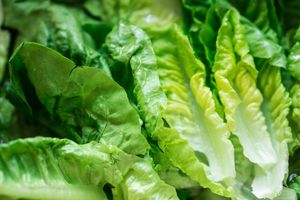Farmers Devastated by Latest Romaine Outbreak
 The recent announcement by the U.S. Food and Drug Administration (FDA) and the Centers for Disease Control (CDC) of expanding illnesses in the E. Coli O157:H7 outbreak associated with romaine lettuce is being met with frustration and heartbreak by California lettuce farmers.
The recent announcement by the U.S. Food and Drug Administration (FDA) and the Centers for Disease Control (CDC) of expanding illnesses in the E. Coli O157:H7 outbreak associated with romaine lettuce is being met with frustration and heartbreak by California lettuce farmers.
The root cause of this and other recent outbreaks linked to romaine lettuce remain a mystery despite a concentrated focus on safety by leafy greens producers and government regulators.

“No one is more frustrated than the producers of leafy greens that outbreaks continue to be associated with our products,” said Scott Horsfall, CEO of the California Leafy Greens Marketing Agreement (LGMA), a food safety program created in 2007 to prevent foodborne illnesses caused by lettuce and leafy greens.
“We are devastated as a leafy greens community when this happens,” said Dan Sutton, a farmer from Oceano, CA. “Our thoughts go to those affected by this outbreak. But that’s why we want to continue to work with governmental agencies to learn why this is happening so that we can improve.”
According to FDA and CDC, consumers are advised not to eat any of the specific products included in recent salad mix recalls and to avoid romaine lettuce from Salinas. At this time, romaine lettuce that was harvested outside of the Salinas region has not been implicated in this outbreak investigation.
“Right now, romaine is being harvested in Arizona and southern California growing areas that are not part of this outbreak and harvest is nearly complete in the Salinas Valley,” explained Horsfall. “Public health agencies have stated that only product from the Salinas area is included in the consumer advisory. Romaine producers will be working closely with their customers to make sure all product from Salinas is removed from marketing channels, but romaine from any other growing area is safe for consumption.”
This means that romaine from the following regions is safe: Yuma, Phoenix, Southern Arizona, Northern Arizona, Northern California, Santa Maria, Southern California, Imperial Valley, Coachella and Central Valley. Product from Mexico and other states is also cleared. Hydroponically and greenhouse grown romaine is also not implicated in the outbreak.
“For the past year, producers have been voluntarily labeling romaine lettuce with information on harvest date and growing region,” explained Horsfall. “Today, this information provides consumers, retailers and foodservice operators with assurances the products they are purchasing have been identified as safe for consumption. We are hopeful these actions by industry will minimize withdrawal of safe product from stores and restaurants and reduce food waste.”
The current outbreak is occurring at a time when the production of leafy greens in central California is transitioning to growing regions in southern California and Arizona. It appears that romaine lettuce involved in this outbreak was likely harvested in the Salinas Valley growing area in September and October.
“We are very hopeful that what we learn from these recent outbreaks will help us to strengthen our food safety practices,” said Horsfall, who emphasized that since an outbreak linked to romaine last Thanksgiving, California and Arizona leafy greens producers made several changes to the food safety practices required of farmers. The changes include updated protocols for irrigation and increased buffer zones between leafy greens farms and adjacent animal operations.
A very stringent set of food safety practices is enforced on leafy greens farms through the LGMA system. Horsfall explained that the role of the LGMA is to verify through government inspection that leafy greens producers are following a set of food safety practices on the farm. Each LGMA member is subject to 4 to 5 on-farm audits each year that are conducted by government officials. The LGMA is the most comprehensive food safety program for fresh produce in the world.
“As farmers, we never want outbreaks to happen,” stressed Sutton, who serves as the chairman of the LGMA. “We will continue to do everything we possibly can to improve our required practices, to improve the way we farm leafy greens and to make sure we can improve the safety of these products we are putting out to our consumers.
“The situation is heartbreaking,” continued Sutton. “I have a very young family and the products we grow go to my family’s dinner table. My children consume the very same products we are sending out to consumers across the nation. That’s something I think about every day.”
The LGMA is working closely with public health agencies and have volunteered to assist with investigations in any way possible. The organization is also working with other initiatives to conduct research to learn more about how romaine is the source of outbreaks. They invite the public, media and government officials to learn more about their program and the practices required of leafy green producers at www.lgma.ca.gov or by contacting them directly at (916) 441-1240.
Source: Morning Ag Clips
